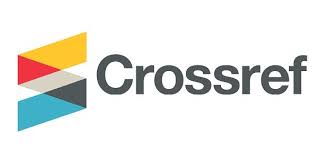LEGAL PROTECTION FOR VICTIMS NARCOTIC ABUSE AND ITS RULE OF LAW
DOI:
https://doi.org/10.33061/wh.v27i1.4555Keywords:
Narcotics, Drug AbuseAbstract
The drug problem in Indonesia is still urgent and complex. In the past decade, this problem has become rampant. This is proven by the significant increase in the number of drug abusers or addicts, along with the increasing disclosure of cases of drug crimes with more diverse patterns and more massive syndicate networks. The Indonesian people, even the world community, in general are currently faced with a very worrying situation due to the rampant use of various types of illegal drugs. Narcotics crimes are no longer committed individually, but involve many well-organized people with a wide network and an increasingly sophisticated mode. The Narcotics Law Number 35 of 2009 was enacted to overcome this condition.References
Badan Narkotika Nasional Republik Indonesia, 2004. Pedoman Pencegahan Penyalahgunaan Narkoba
Bagi Pemuda. Jakarta. Dani Krisnawati et.al, 2006. Bunga Rampai
Bakhri, Syaiful. Kejahatan Narkotika dan Psikotropika: Suatu Pendekatan Melalui Kebijakan Hukum
Pidana. Bekasi: Gramata Publishing, 2012.
Gunarto, Marcus Priyo, dkk. Bunga Rampai Hukum Pidana Khusus. Jakarta: Pena Pundi Aksara, 2006.
Paulus Hadisuprapto, Juvenile Deliquency Pemahaman dan Penanggulangannya, (Bandung : Citra Aditya
Bakti, 1997).
Peraturan Bersama Tahun 2014.
Sudarto, Hukum Pidana I, Yayasan Sudarto d/a Fakultas Hukum Undip, Semarang, 1990.
UU No. 35 Tahun 2009 Tentang Narkotika.
Wagiati Soetodjo, Hukum Pidana Anak, (Bandung : Refika Aditama, 2006)
Wirjono Projodikoro, Asas-Asas Hukum Pidana Di Indonesia, Jakarta: PT. Eresco, 1981.
Yap Manaffe, Advokasi Pencegahan Penyalahgunaan Narkoba, (Yogyakarta : BNNP D.I.Yogyakarta, Edisi
Cetakan ulang, 2012)
Downloads
Published
How to Cite
Issue
Section
License
Authors who publish with this journal agree to the following terms:
- Copyright on any article is retained by the author(s).
- The author grants the journal, the right of first publication with the work simultaneously licensed under a Creative Commons Attribution License that allows others to share the work with an acknowledgment of the work’s authorship and initial publication in this journal.
- Authors are able to enter into separate, additional contractual arrangements for the non-exclusive distribution of the journal’s published version of the work (e.g., post it to an institutional repository or publish it in a book), with an acknowledgment of its initial publication in this journal.
- Authors are permitted and encouraged to post their work online (e.g., in institutional repositories or on their website) prior to and during the submission process, as it can lead to productive exchanges, as well as earlier and greater citation of published work.
- The article and any associated published material is distributed under the Creative Commons Attribution-ShareAlike 4.0 International License
















.png)


